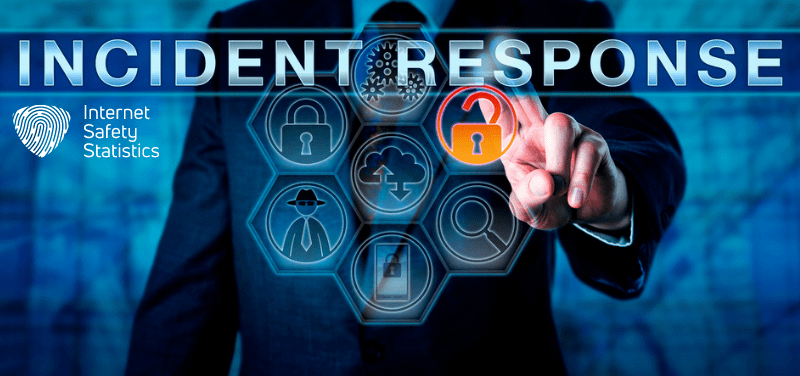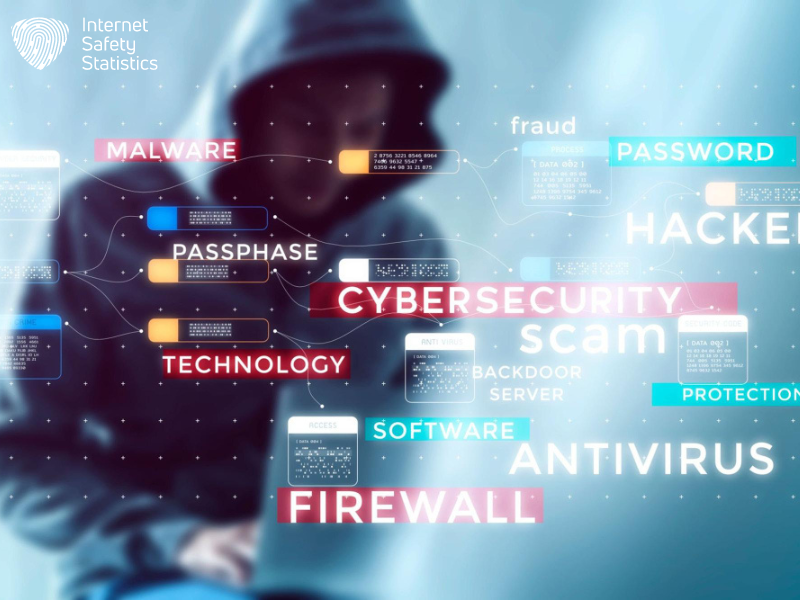
With the increasing dependence on digital technology, the risk of cybersecurity incidents has become a pressing concern for businesses and organisations. An incident response plan is a crucial strategy for managing and mitigating cyber threats effectively. This article aims to provide an in-depth understanding of incident response plans and their importance in today’s digital landscape. From developing effective frameworks to outlining key components and responsibilities, this guide offers actionable insights to defuse the digital bomb.
What is an Incident Response Plan?
An Incident Response Plan is a documented procedure that outlines the steps an organisation will take in the event of a security breach or other disruptive incident. It details the roles and responsibilities of various staff members, as well as the specific actions to be taken to contain and eradicate the incident. This may include isolating affected systems, notifying relevant authorities, and determining the extent of the breach.
The plan also includes protocols for communication both internally and externally, as well as a method for evaluating the effectiveness of the response and making improvements for the future. Having a well-developed incident response plan is crucial for minimising the impact of security incidents and ensuring a swift and organised response.
Understanding the Basics of Incident Response Plans
An incident response plan is a predefined set of instructions and procedures for detecting, responding to, and recovering from cybersecurity incidents. These incidents can range from data breaches and malware attacks to network intrusions and insider threats.
Key elements of an IRP
- Detection and Analysis: Defining methods for identifying and analysing potential security incidents.
- Containment and Eradication: Outlining steps to isolate the incident, prevent further damage, and remove the threat.
- Recovery and Restoration: Strategies for restoring compromised systems and data to full functionality.
- Post-Incident Activities: Procedures for evaluating the incident, identifying vulnerabilities, and preventing future occurrences.
- Roles and Responsibilities: Clearly assigning tasks and communication channels for each team member during an incident.
Developing an Effective Incident Response Plan
Developing an effective incident response plan involves identifying potential threats, outlining specific response steps, and establishing clear communication protocols. It also includes setting up monitoring systems and creating a dedicated incident response team.
Let’s dive into the crucial steps to develop an IRP that empowers your team to act swiftly and effectively when the alarms sound.
Assess Your Digital Landscape
- Identify and prioritise assets: Understand what data and systems are critical to your operations. Rank them based on their impact on business continuity, confidential information, and potential financial losses.
- Map potential threats: Analyse your industry, size, and online presence to understand the threats you’re most likely to face. Research common attack vectors and vulnerabilities in your systems.
- Identify existing security controls: Evaluate your current security tools, policies, and procedures to determine existing strengths and weaknesses.
Build Your Response Team
- Assemble a dedicated IRP team: Bring together individuals from IT, security, legal, communication, and senior management for a holistic approach. Define clear roles and responsibilities for each member.
- Invest in training: Equip your team with the knowledge and skills needed to handle incident response. Consider professional training or simulations to test their response capabilities.
- Establish clear communication channels: Define internal and external communication protocols for information sharing during an incident.
Craft Your Response Phases
- Preparation: Develop procedures for proactive threat detection and intelligence gathering. Implement logging and monitoring systems to identify suspicious activity early.
- Detection and Identification: Outline steps for verifying and categorising potential incidents. Define triggers and escalation procedures for immediate response.
- Containment and Eradication: Define protocols to isolate the affected systems and prevent further damage. Develop strategies for neutralising the threat, such as quarantining infected files or blocking malicious IP addresses.
- Recovery and Restoration: Determine procedures for restoring compromised systems and data. Prioritise critical systems and ensure a smooth backup and recovery process.
- Post-Incident Review and Analysis: Conduct a thorough analysis of the incident to identify root causes, vulnerabilities, and lessons learned. Update your IRP based on these findings to prevent future occurrences.
Test and Continuously Improve
- Regularly simulate incident scenarios: Conduct tabletop exercises or penetration tests to identify weaknesses and assess team response capabilities.
- Update your IRP: Revise your plan based on real-world experiences, new threats, and changes to your network or technology.
- Maintain awareness: Foster a culture of cybersecurity awareness within your organisation to encourage vigilance and reporting of suspicious activity.
Why is Cybersecurity Incident Response Planning Important?

Cyber threats are inevitable in today’s hyper-connected world, where malicious actors lurk around every digital corner. Just like you wouldn’t face a fire without a fire drill, navigating the storm of data breaches, malware attacks, and other digital emergencies requires a robust incident response plan (IRP). Here’s why planning ahead is your most valuable asset in the face of cyber-chaos:
Faster Reactions, Smaller Impact
Imagine a hacker infiltrating your systems. Without a plan, your team scrambles, wasting precious time identifying, containing, and eradicating the threat. An IRP outlines clear steps, enabling a swift and coordinated response and minimising damage and downtime. Think of it as putting out a small fire before it engulfs the entire building.
Reduced Costs, Saved Resources
Every moment a breach goes unchecked translates to lost revenue, reputational damage, and costly recovery efforts. A well-defined IRP helps contain the impact of an incident, preventing cascading consequences and saving your organisation significant financial resources. It’s akin to using a fire extinguisher instead of needing a complete rebuild.
Strengthened Defense Posture
Building an Incident Response Plan isn’t just about reacting to attacks; it’s about proactively identifying vulnerabilities and plugging security gaps. The process of creating and testing your plan forces you to examine your systems and defences, making them more resilient against future threats. Think of it as reinforcing your walls and installing alarms before facing a siege.
Increased Confidence and Trust
Knowing you have a plan in place fosters confidence within your organisation, employees, and customers. It demonstrates your commitment to cybersecurity and data protection, ensuring trust and peace of mind in the face of potential threats. It’s like having a fire escape during an earthquake, knowing there’s a clear path to safety.
Establishing a Security Incident Response Team

Establishing a dedicated security incident response team allows for efficient coordination and collaboration during incident handling. This team is responsible for implementing the incident response plan, conducting investigations, and restoring systems to normal operations.
Recruiting the Right Players
- Assemble a diverse team: Don’t limit yourself to tech experts. Gather individuals from IT, security, legal, communication, and even senior management. Each perspective brings invaluable strengths to the table.
- Identify key roles: Define positions like incident commander, analyst, containment specialist, and public relations spokesperson. Tailor roles to suit your team size and organisational structure.
- Seek specialised skills: Look for individuals with expertise in threat analysis, digital forensics, malware mitigation, and incident communication. Consider external consultants for specific gaps.
Training and Education
- Invest in knowledge: Equip your IRT with the necessary skills through training programs, workshops, and simulations. Cover topics like incident response methodologies, threat intelligence, forensics tools, and communication protocols.
- Practice makes perfect: Conduct regular drills and tabletop exercises to test your team’s response capabilities and identify areas for improvement. Simulate various attack scenarios to ensure everyone knows their roles and can react swiftly.
- Stay updated: The threat landscape is ever-changing. Encourage continuous learning through industry publications, conferences, and professional certifications to stay ahead of the curve.
Structuring Your IRT
- Define clear reporting lines: Establish hierarchy and communication channels within the team. Identify who makes decisions, who gathers information, and who communicates with stakeholders.
- Implement collaboration tools: Equip your team with collaborative platforms and communication channels to facilitate real-time information sharing and coordinated action during an incident.
- Set up incident response protocols: Document procedures for each stage of a security incident, from detection and containment to recovery and post-mortem analysis. This ensures consistent and effective responses every time.
Integrating with Your Organisation
- Raise awareness: Foster a culture of cybersecurity awareness within your organisation. Train employees to identify suspicious activity and report it to the IRT promptly.
- Test incident readiness: Conduct simulations involving multiple departments to assess overall response capabilities and identify areas of improvement across the organisation.
- Gain senior management buy-in: Secure support and resources from leadership. Highlight the importance of the IRT and its role in protecting the organisation’s valuable assets and reputation.
Remember: Your IRT is not just a team; it’s a shield against the ever-present digital threats. By assembling the right individuals, equipping them with the necessary skills, and fostering a culture of preparedness, you build a resilient force ready to defend your organisation in the face of any cyber storm.
How Do You Develop an Effective Incident Response Framework?
Here are the key steps to develop an effective Incident Response Framework (IRF):
Preparation
- Risk Assessment: Identify potential threats and vulnerabilities within your organisation. Analyse your industry, size, and online presence to understand common attack vectors.
- Asset Prioritisation: Determine the most critical systems and data that require protection, prioritising them based on business impact and confidentiality.
- Team Assembly: Establish a dedicated IRT with diverse expertise from IT, security, legal, communication, and senior management. Assign clear roles and responsibilities.
- Training and Education: Equip your team with the knowledge and skills necessary for incident response, covering threat analysis, digital forensics, malware mitigation, and communication protocols.
- Policies and Procedures: Develop documented policies and procedures outlining the steps to be taken during an incident, ensuring a consistent and coordinated response.
Identification
- Monitoring and Detection: Implement robust monitoring tools and systems to detect suspicious activity, log events, and generate alerts.
- Incident Classification: Define criteria for classifying incidents based on severity and potential impact, allowing for appropriate prioritisation and resource allocation.
- Communication Protocols: Establish clear communication channels and escalation procedures for reporting incidents within the organisation, ensuring timely action and information sharing.
Containment
- Isolation and Mitigation: Isolate affected systems to prevent the threat from spreading further. Implement measures to contain the damage, such as blocking network access, disabling accounts, or quarantining files.
- Evidence Preservation: Collect and preserve digital evidence for forensic analysis, ensuring proper chain of custody and adhering to legal requirements.
Eradication
- Threat Removal: Neutralise the threat by removing malware, patching vulnerabilities, or restoring compromised systems from backups.
- Root Cause Analysis: Conduct a thorough investigation to identify the root cause of the incident, ensuring that similar attacks can be prevented in the future.
Recovery
- Restoration of Systems: Restore affected systems and data to full functionality, prioritising critical operations and ensuring data integrity.
- Business Continuity: Implement measures to maintain business operations during and after the incident, minimising downtime and financial losses.
Post-Incident Activities
- Lessons Learned: Conduct a post-incident review to identify lessons learned and areas for improvement in your IRF.
- Plan Updates: Revise your IRF based on the findings of the post-incident review, addressing any identified weaknesses and incorporating new best practices.
- Communication and Reporting: Communicate the incident and its resolution to relevant stakeholders, including employees, customers, partners, and regulatory bodies, as appropriate.
Continuous Improvement
- Regular Testing and Simulations: Conduct regular tabletop exercises and simulations to test your IRF and team’s response capabilities.
- Stay Up-to-Date: Keep your IRF updated with the latest threat intelligence, attack vectors, and industry best practices to remain proactive against evolving threats.
- Promote Awareness: Foster a culture of cybersecurity awareness within your organisation, encouraging employees to report suspicious activity and follow security best practices.
What are the Key Components of a Cyber Incident Response Plan?
The key components of a cyber incident response plan include a clear definition of roles and responsibilities, a comprehensive communication strategy, a robust incident detection plan and analysis system, a well-defined incident response process, and a thorough documentation and reporting mechanism. It is essential for the plan to also have a defined escalation path, a reliable backup and recovery system, and a continuous improvement process for updating and testing the plan.
Additionally, a well-trained and coordinated response team, a strong relationship with external stakeholders such as law enforcement and regulatory bodies, and a proactive monitoring and threat intelligence system are crucial components of an effective cyber incident response plan.
Outlining the Essential Elements of a Cyber Incident Response Plan
The key components of a cyber incident response plan include clear escalation paths, communication protocols, and predefined response actions for different types of incidents. It also involves regularly updating the plan to address evolving cybersecurity threats.
Understanding the Severity of a Cybersecurity Incident
Assessing the severity of a cybersecurity incident is vital for prioritising response efforts and allocating resources effectively. This involves categorising incidents based on their impact, scope, and potential harm to the organisation.
Ensuring Business Continuity Amidst Cybersecurity Incidents
Business continuity measures are integrated into the incident response plan to minimise disruptions and maintain essential operations during and after a cybersecurity incident. This includes contingency plans for maintaining critical services and communication channels.
Who is Responsible for Cybersecurity Incident Response?
The responsibility for cybersecurity incident response typically falls to a dedicated team of IT professionals within an organisation. This team is responsible for detecting, analysing, and responding to any cybersecurity incidents that may occur.
They may also work closely with other departments, such as legal and public relations, to ensure a coordinated and effective response. Additionally, leadership and executives within the organisation also play a role in setting the overall strategy and policies for cybersecurity incident response, as well as providing the necessary resources and support for the IT team to carry out their responsibilities effectively.
Defining the Roles and Responsibilities in Incident Response
The roles and responsibilities within incident response encompass a wide spectrum of tasks, from initial incident detection to recovery and post-incident analysis. Each member of the incident response team plays a critical role in ensuring a comprehensive and efficient response.
The Role of Security Incident Response Teams
Security incident response teams are tasked with orchestrating the response efforts, conducting forensic investigations, and implementing remediation measures. They work collaboratively to contain and eradicate the incident, minimising its impact on the organisation.
Collaboration Between Security Teams for Effective Incident Response
Collaboration between different security teams, including IT, cybersecurity, and network operations, is essential for effective incident response. This multidisciplinary approach ensures comprehensive coverage and expertise in mitigating various types of incidents.
Don’t wait for an attack to build your defences. Build your own incident response plan, assemble your team, and start implementing your plan today.
